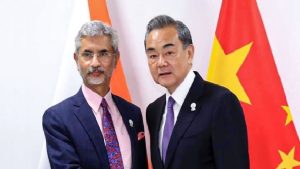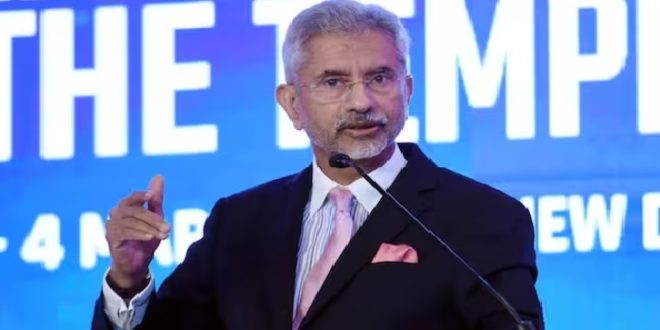13-09-2024
GENEVA/ NEW DELHI: Indian Foreign Affairs Minister S Jaishankar said that there has been “some progress” with China on the boundary issue. The minister said that approximately 75 percent of the “disengagement” problems has been resolved.
 Jaishankar, who is in Geneva, Switzerland for bilateral meetings, said this at an interactive session at the Global Centre for Security Policy an independent think-tank. The minister further said that the bigger issue has been the increasing militarization of the frontier.
Jaishankar, who is in Geneva, Switzerland for bilateral meetings, said this at an interactive session at the Global Centre for Security Policy an independent think-tank. The minister further said that the bigger issue has been the increasing militarization of the frontier.
Jaishankar said the Galwan Valley clashes of June 2020 affected the “entirety” of India-China ties, asserting that “One cannot have violence at the border and then say the rest of the relationship is insulated from it”.
“Negotiations are going on. We made some progress. I would say roughly you can say about 75 per cent of the disengagement problems are sorted out,” he said, adding “We still have some things to do.”
Ties between India and China have been at an all-time low as the militaries of both nations have been standing their ground since the standoff in Ladakh began in May 2020. The disengagement process began in February 2021 and has been on since.
Roughly 75% of the disengagement problems with China has been sorted out, Jaishankar said. Jaishankar is scheduled to meet Chinese Foreign Minister Wang Yi during his visit to Switzerland.
Talks at both the diplomatic and military levels between India and China have held on an ongoing basis. “We hope that if there is a solution to the disengagement and there is a return to peace and tranquility, then we can look at other possibilities,” Jaishankar said while partial disengagement from Galwan, Hot Springs, and Gogra happened in July 2020 while full disengagement from Pangong Lake north and south banks took place in February 2021. However, Chinese soldiers are firmly entrenched in the Depsang Plains in northeastern Ladakh and show no signs of moving.
 The Line of Actual Control or LAC between India and China, including China-occupied Tibet, is around 3,500 km in length.
The Line of Actual Control or LAC between India and China, including China-occupied Tibet, is around 3,500 km in length.
India has maintained that its ties with China cannot be normal unless there is peace in the border areas. “The basis obviously for a good relationship, I would say even for a normal relationship, was that there would be peace and tranquility in the border. After things started to take a better turn in 1988, we had a series of agreements which stabilized the border,” Jaishankar said.
Speaking about how China unilaterally changed the status-quo along the LAC, Jaishankar said “What happened in 2020 was in violation of multiple agreements for some reasons which are still entirely not clear to us; we can speculate on it.”
“The Chinese actually moved a very large number of troops to the Line of Actual Control at the border and naturally in response, we moved our troops up. It was very difficult for us because we were in the middle of a COVID lockdown at that time,” he said.
Describing the development as very dangerous and referring to the Glawan clashes, Jaishankar said, “Now we could see straight away that this was a very dangerous development because the presence of a large number of troops in these extreme heights and extreme cold in near proximity could lead to a mishap. And that’s exactly what happened.”
“We have now been negotiating close to four years and the first step of that is what we called disengagement which is their troops go back to their normal operating bases and our troops go back to their normal operating bases and where required we have an arrangement about patrolling because both of us patrol regularly in that border as I said it is not a legally delineated border.” Jaishankar said. (Int’l News Desk)
 Pressmediaofindia
Pressmediaofindia




